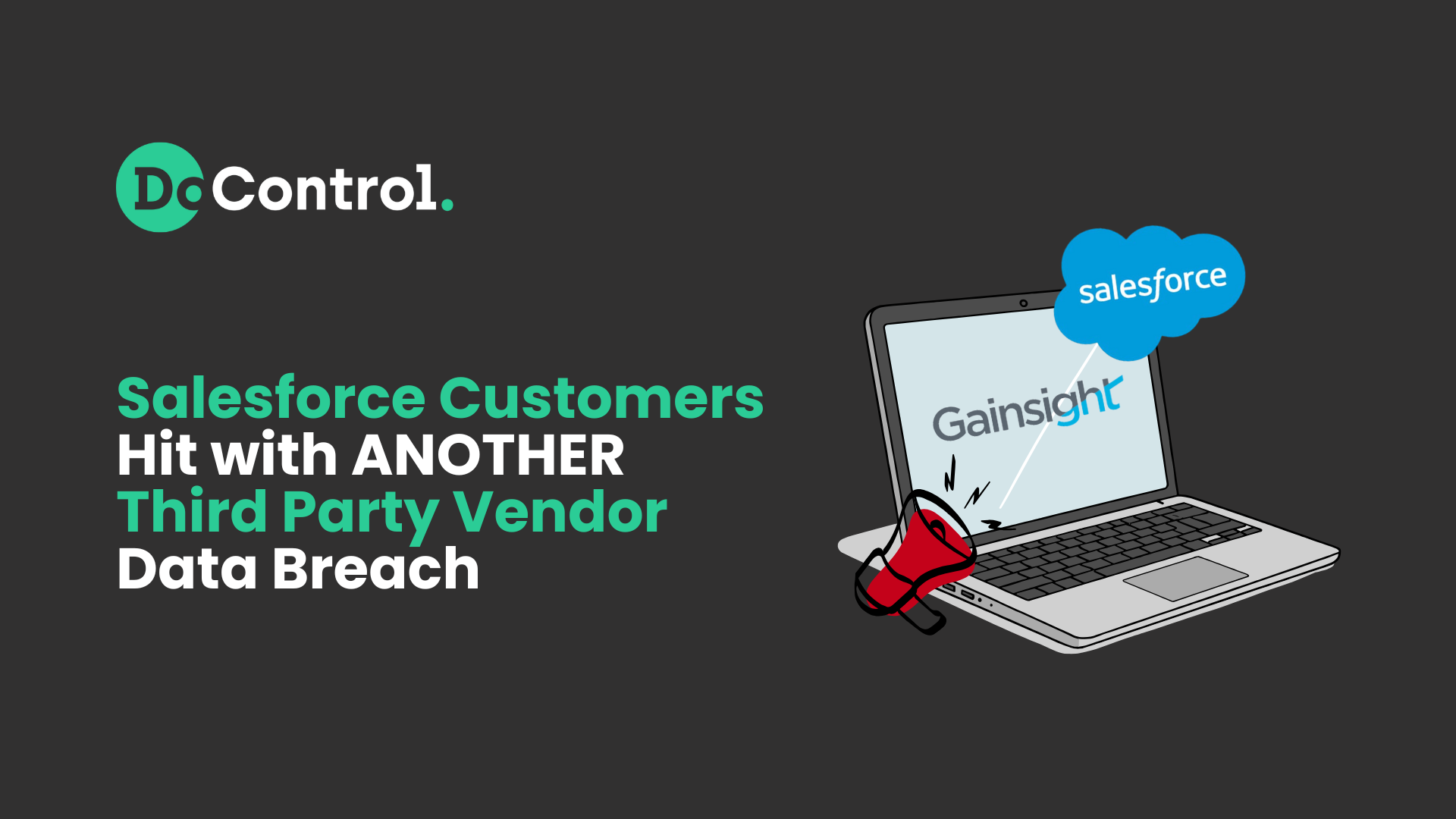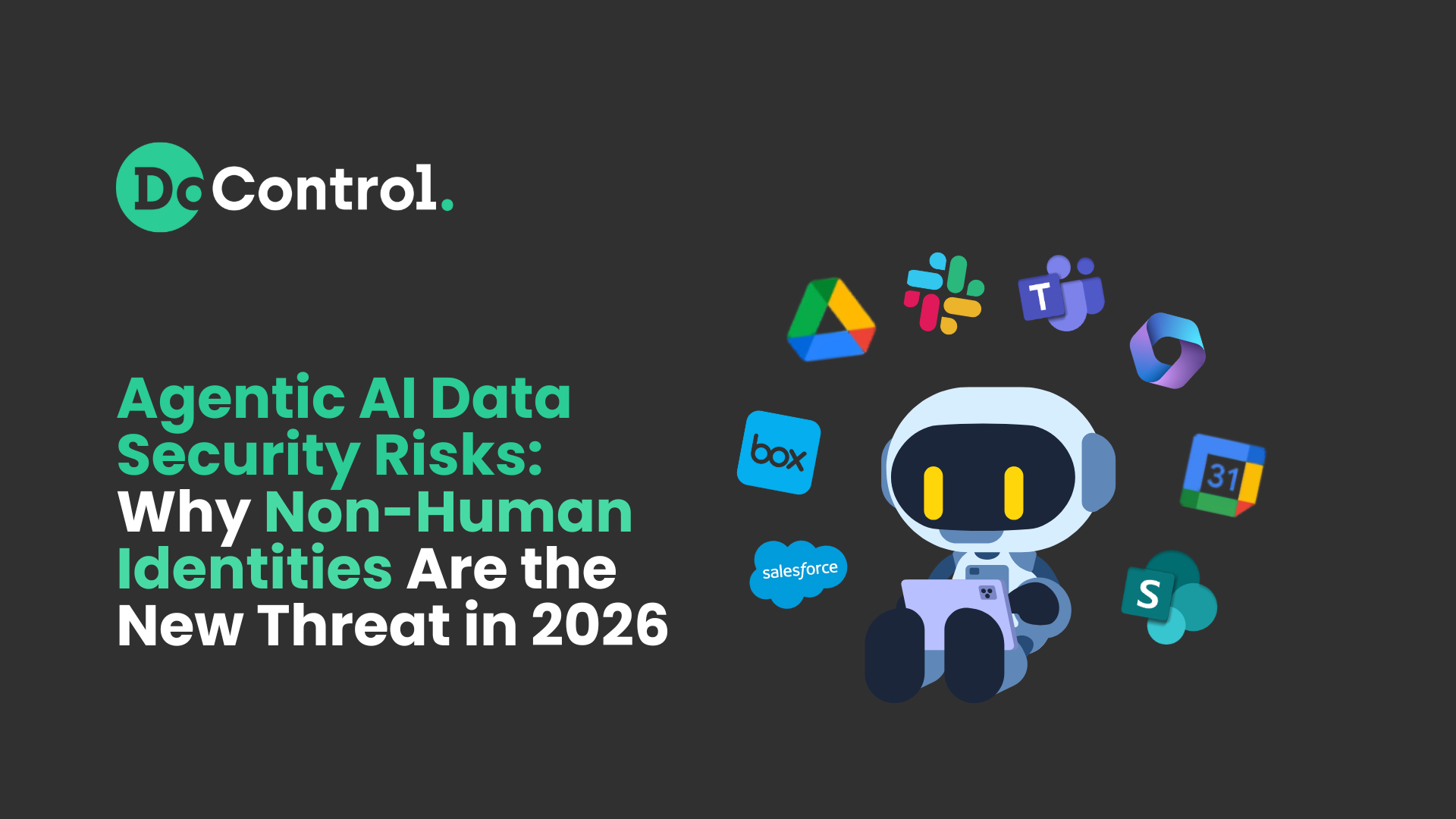
A comprehensive review of how DoControl protects healthcare organizations everywhere through modern, automated data security.
Why Healthcare Companies Need Data Security
Healthcare organizations deal with some of the world’s most sensitive information: patient health records, insurance data, internal clinical research, and more.
Healthcare and health-tech organizations have traditionally operated in tightly controlled on-prem environments, where data lived within a single perimeter, and security teams could rely on centralized access, visibility, and governance.
But, as these organizations rapidly adopt cloud infrastructure and SaaS applications to gain speed, scalability, and operational efficiency, the security model fundamentally shifts.
Data is no longer contained under one roof - it's distributed across dozens of cloud services and SaaS applications - accessed by many diverse teams and constantly in motion.
This decentralization introduces new risks around visibility, access control, data sharing, and configuration drift, creating a modern security challenge that legacy on-prem tools were never designed to handle.
Modern healthcare requires modern security - especially security that can continuously keep up with how data moves, is shared, and is accessed.
Industry Overview: The Data Challenge in Healthcare
Healthcare has become one of the most data-rich and operationally distributed industries in the world. Care teams, administrative staff, billing departments, third-party vendors, and even patients themselves all interact with data in multiple digital environments every day.
This creates new exposure points for PHI, PII, and critical operational data, making healthcare one of the most targeted industries for cyberattacks, insider threats, and accidental data leakage.
The main challenges are as follows:
- Care and corporate teams collaborate constantly across Google Drive, Slack, and shared inboxes - often exchanging files that contain PHI or PII without fully recognizing the compliance implications of how that data is shared or stored.
- Maintaining HIPAA compliance becomes increasingly complex in SaaS environments, where PHI can be exposed through public links, overshared Google Drive folders, Slack file uploads, or unmanaged third-party integrations - requiring continuous oversight and automated enforcement.
- Sensitive patient information frequently moves between Google Drive directories, Slack conversations, and external coordination tools, creating visibility gaps where data can be unintentionally overshared, misconfigured, or left exposed.
- Teams, contractors, part-time staff, and external partners often operate within the same Google Workspace or M365 tenant - meaning many users retain access to sensitive data long after projects end, roles change, or contractors offboard.
This makes visibility, control, and compliance more difficult than ever.
Three Core Data Security Challenges in Healthcare
When it comes to protecting sensitive data that lives within Healthcare organizations, there are three main challenges:
1) Understanding SaaS data movement of PHI and PII
PHI and PII flow through countless SaaS apps - often without centralized oversight.
2) Understanding who has access to what data
From internal users, external vendors, and contractors, managing permissions is a constant challenge.
3) Ensuring all policies align with HIPAA standards
Every access decision, every data movement, and every workflow must meet HIPAA’s strict regulatory requirements.
Critical questions healthcare leaders struggle to answer:
- Does this person have access to PHI or PII?
- Should they have access to this based on their role, department, and scope?
- If not, what are the compliance, operational, and financial consequences?
Understanding Internal & External Access to PHI/PII to Prevent HIPAA Compliance Breaches
The Challenge
Healthcare organizations must maintain complete visibility into who can access PHI and PII - across every SaaS application, file, and workflow. Without it, HIPAA compliance breaks down, and data is exposed to unnecessary risk.
Why It Matters
- HIPAA violations result in massive financial penalties, often reaching millions in fines and legal costs.
- Patient trust is damaged, which can directly impact brand reputation, patient retention, and regulatory scrutiny.
- Operational disruption increases, as investigations, audits, and incident response divert time and resources from patient care.
If Ignored
Failing to properly govern access to sensitive PHI and PII leads to:
- Unauthorized internal access or accidental exposure, resulting in reportable HIPAA violations, mandatory breach notifications, and potential civil monetary penalties.
- External vendors and contractors retaining access long after contracts end, increasing the risk of data exfiltration, misuse, or unauthorized downloading - all of which become major liabilities during audits or investigations.
- Higher audit failure rates, which can trigger corrective action plans (CAPs), expanded oversight, and costly compliance remediation efforts.
- A significantly increased likelihood of breaches, ransomware events, and data misuse, which can disrupt care operations, delay clinical workflows, and expose the organization to multimillion-dollar financial losses.
- Damage to patient trust and organizational reputation, which impacts patient retention, partnership opportunities, and overall brand credibility - especially when PHI is involved.
- Operational drag and resource strain, as legal, IT, and compliance teams must shift focus to investigating incidents, conducting manual access reviews, and rebuilding controls after a failure.
How DoControl Solves These Problems For Healthcare Customers
DoControl enables healthcare organizations to enforce HIPAA-aligned data security without slowing down care delivery:
Data Access Governance
DoControl provides full visibility into who has access to PHI and PII across every SaaS platform, including Google Drive, Slack, M365, and more. It continuously maps where sensitive files live, how they’re shared, and which internal or external users have permissions - eliminating guesswork for security and compliance teams.
This ensures healthcare organizations can quickly identify overexposed data, track PHI distribution, and confidently meet HIPAA documentation and audit requirements.
Context-Enriched Risk Evaluation
DoControl not only shows who is accessing data, but why - using context derived from HRIS, IdP, and role-based systems to determine whether access is appropriate. By understanding job function, employment status, department, and the sensitivity level of the data, DoControl can flag - and automatically remediate - access that doesn’t align with clinical workflows or HIPAA standards.
This prevents unnecessary access to PHI/PII by contractors, terminated employees, or external collaborators who no longer require it.
DLP Policies with Automated Remediation
DoControl enforces fully automated DLP controls that detect risky shares, excessive permissions, and inappropriate data movement in real time. Instead of relying on manual cleanup, the platform automatically revokes access, removes public links, corrects misconfigurations, and restricts file sharing based on HIPAA-aligned policies.
This keeps PHI protected even when teams rapidly collaborate across Google Drive, Slack channels, and external tools.
Continuous Compliance & HIPAA Alignment
DoControl ensures that security, compliance, and data-access policies are consistently applied across the entire SaaS environment - without requiring teams to manually intervene. HIPAA requirements such as minimum necessary access, audit logging, and continuous monitoring are built directly into policy workflows, helping organizations maintain compliance across all SaaS applications. Users can also check when their environments fall short of industry standards.
As data moves, users change roles, or files are shared, DoControl keeps permissions aligned to HIPAA standards automatically.
Key Takeaways
Healthcare organizations face rapidly expanding risk as data volumes grow, new SaaS tools enter the environment, and clinical teams collaborate across Google Workspace, Slack, and M365.
Gaining clarity into who can access PHI and PII - and how that data is shared, moved, and stored is foundational to protecting patient trust, maintaining HIPAA compliance, and ensuring operational resilience.
With DoControl, healthcare security teams gain automated visibility, precise access governance, and continuous compliance across the entire SaaS ecosystem. Our platform enables organizations to enforce least-privilege principles, eliminate data exposure, and protect sensitive information at scale, all without slowing down care coordination, administrative workflows, or innovation.
Looking ahead, healthcare data environments will only continue to diversify and become more complex. Modern, automated data security ensures providers, payers, and health tech companies can confidently advance digital initiatives knowing that every file, every user, and every workflow is continuously protected - no matter how the SaaS landscape evolves.
{{cta-1}}


